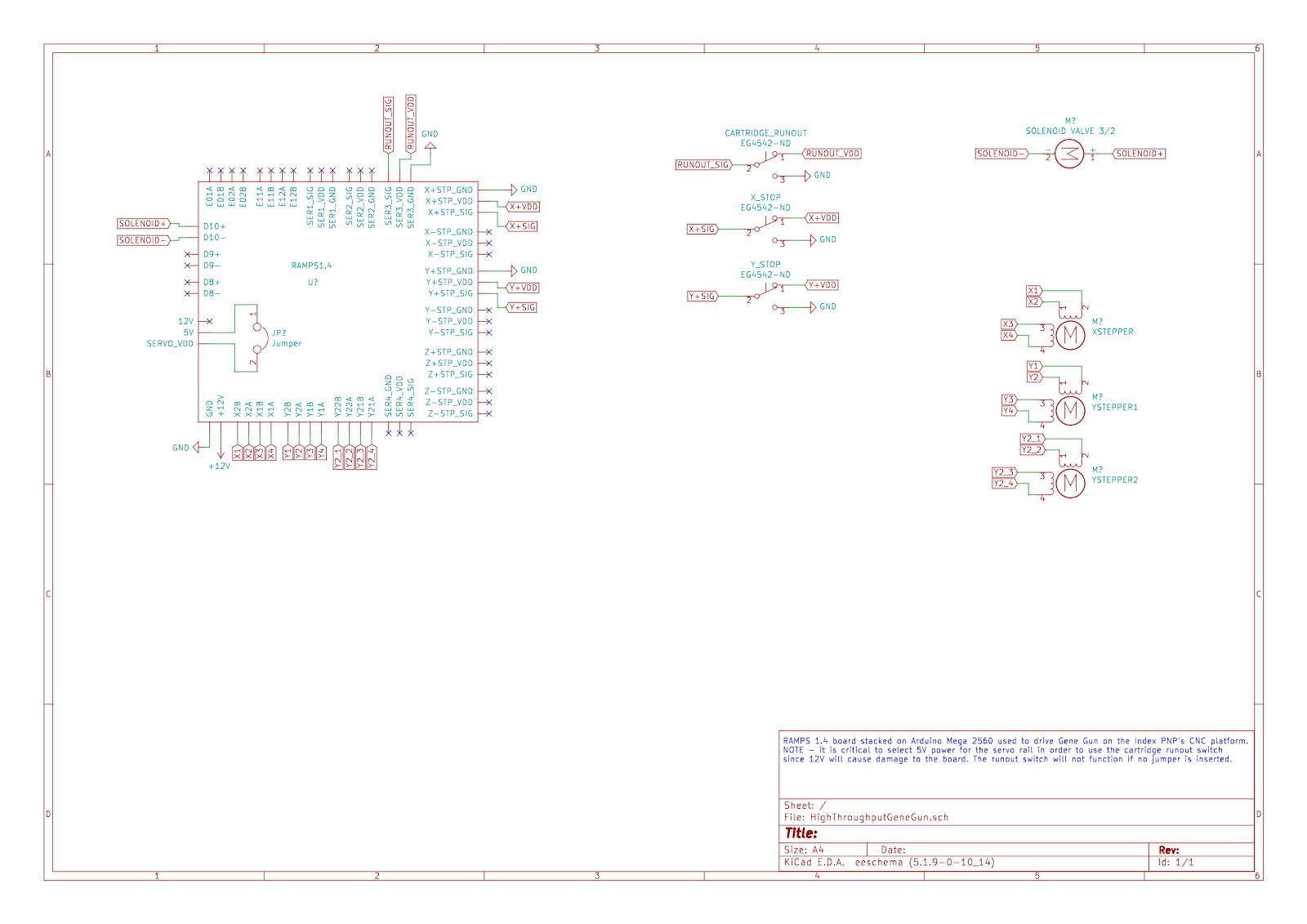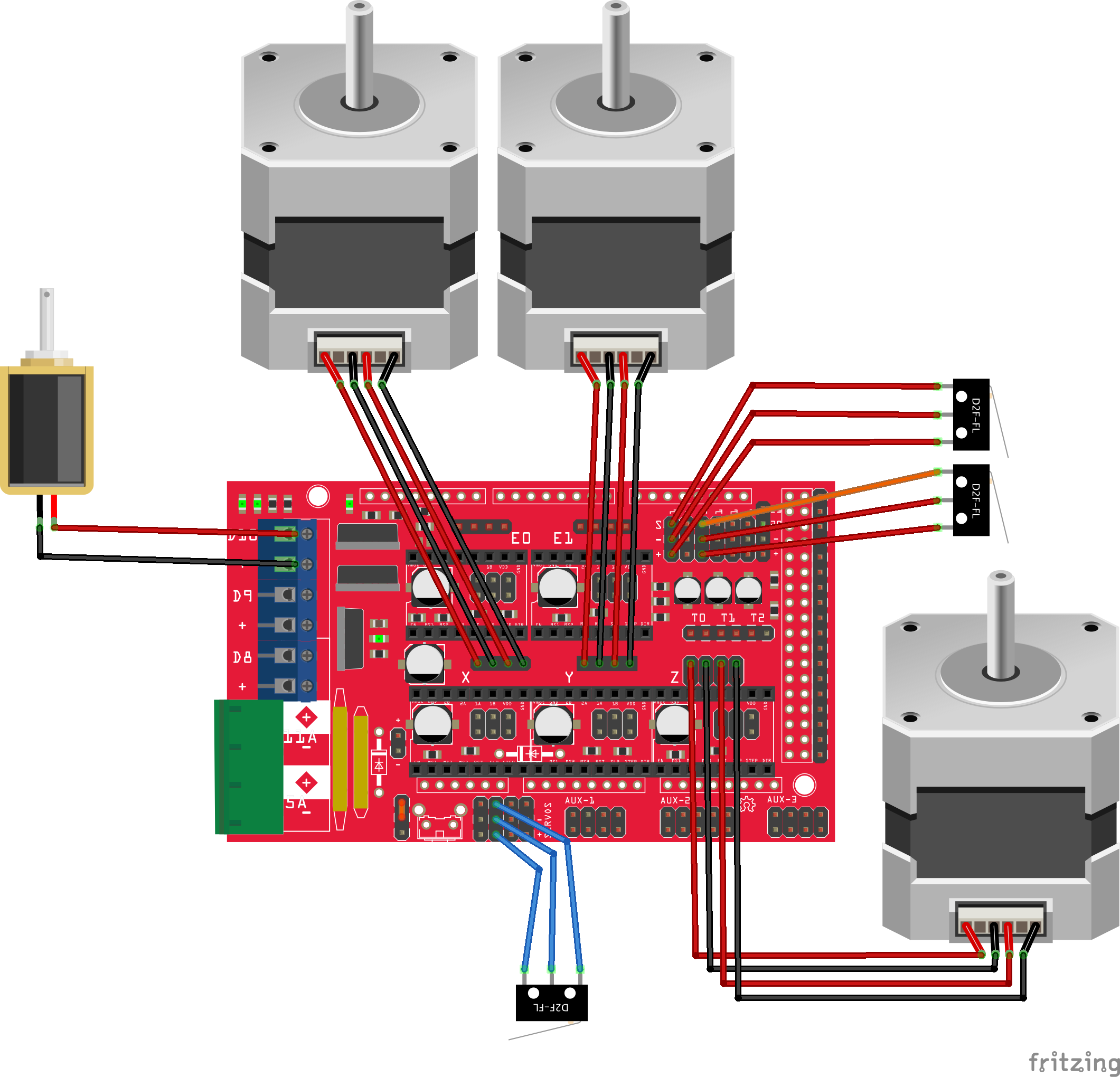Biolistics is an essential method for DNA delivery to monocot crops like rice or wheat. It introduces DNA into target tissues by bombarding them with DNA coated macroparticles. Commercially available biolistics devices and DIY alternatives are hindered by limitations including tissue destruction, low transformation rate, slow bombardment, and high cost. We intend to overcome these limitations through a novel CNC biolistics platform, which will achieve a high rate of successful transformation through an adapted nozzle design, increased DNA “bullet” capacity, and automation via computer vision recognition of calli.
Current ProgressWe have successfully developed a pneumatic system that can fire macrocarriers and cycle between different cartridges containing tungsten macrocarriers. Check out this video to see it in action:
The components of this system are detailed in the following diagram:
The system is supplied regulated inert gases through one of these options:
- High-pressure helium tank with Airgas regulator.
- CO2 cartridge with paintball regulator.
The system is actuated by means of a normally open, 3 port/two direction valve. The solenoid valve can be actuated electrically by means of a MOSFET configured as a high-side switch. A second mechanically actuated valve is present here as an override for testing purposes and in the case of electrical failure.
The bombardment and loading are performed by a Quick-Exhaust valve coupled to a short-stroke double-acting cylinder. Upon pressurization, the cylinder extends, rotating the barrel mechanism and loading in the next macrocarrier cartridge. Upon depressurization, the inert gas expands through the cartridge and forces the macrocarriers towards the sample.
These macrocarrier cartridges consist of sections of PTFE tubing within 3D-printed cartridges that are linked together into a belt. The current belt model is fully-3D printable.
The pneumatic toolhead is only one component of the entire machine - the remainder of the system is devoted to identifying targets and accurately bombarding.
The CNC platform we've decided to base our device on is the open-source pick-and-place machine called the Index, developed by Stephen Hawes. We're using an off-the-shelf RAMPS 1.4 and Arduino Mega 2560 to control the X and Y stepper motors to move the toolhead, and we have removed the Z axis for the time being to reduce system complexity. A small limit switch within the pneumatic toolhead detects the presence of a cartridge to prevent firing in the case of mechanical failure or the absence of macrocarriers. And a USB camera mounted to this toolhead can view the workspace, ensuring proper alignment over each callus before bombardment.
















Comments
Please log in or sign up to comment.